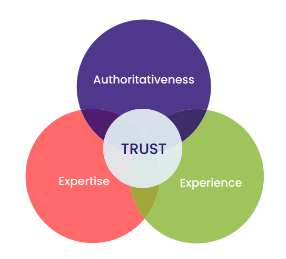Conducting a thorough SEO analysis of a website provides much more than a list of keywords. An in-depth examination of your SEO strategy helps enhance every aspect of your brand’s marketing. It provides deep insights into what your ideal audience is looking for, and how you can provide it to them in a way they’ll notice.
To do that, SEO analysis has to go deeper than surface-level results. It has to carefully study the competition’s SEO strategies, the audience’s intent, and more. The next time you decide you need an SEO analysis of your website, look for a team of experts who can provide each of the following key steps:
An audit of your current SEO
An audit is the first step of any SEO analysis of a website. It’s a process that can be aided by some SEO tools that are available for free online.
An SEO audit provides a comprehensive overview of the current health of your on-site SEO. Auditing tools accomplish this by crawling your website and checking a combination of different content, on-page, and technical qualities that affect SEO against known best practices.
A few of the most common parameters evaluated during SEO audits include:
- Technical SEO (such as page speed, mobile friendliness, crawlability, etc.)
- Meta information (titles, descriptions, image tags, etc.)
- Page and URL structure
- Link structure (redirects, back and crosslinks, etc.)
- Keywords and current keyword rankings
- On-page content quality (length, readability, keyword inclusion, etc.)
Many auditing tools will assign “scores” for each of the SEO categories they’re checking against. These scores summarize how your site’s SEO measures up to best practices or your SERP competition.
Many tools also suggest quick methods for fixing common SEO mistakes to improve your scores. For example, most SEO auditing tools will point out if you have any pages that aren’t crawlable on Google and suggest ways you could correct that.
SEO audits can give you a broad idea of how effective your SEO looks right now and can point out ways to start improving it. What they can’t do, however, is contextualize the effectiveness of your SEO relative to your website’s unique needs and goals. To do that, you’ll need to dig a little deeper.
Keyword analysis
An audit tells you which keywords you’re currently ranking for; a keyword analysis begins to evaluate which keywords you should be ranking for.
Keyword analysis begins by evaluating your website to find the keywords relevant to your subject matter. For example, if your website’s goal is to promote your B2B brand’s services, then a keyword analysis would likely start by evaluating metrics such as:
- How well your site ranks for branded keywords (such as your brand’s name and the name of your proprietary products and services)
- How well your site ranks for keywords related to your products or services
- How well your site ranks for keywords related to concepts, ideas, or functions relevant to your buyer’s journey
Uncovering this information will give SEO analysts a holistic overview of how well your website’s SEO strategy is helping you rank for the right keywords. It will also provide a natural roadmap for prioritizing opportunities based on impact.
The next crucial step of keyword analysis is a gap analysis. During a gap analysis, SEO analysts identify keywords related to your subject matter that you’re not currently ranking for. By either updating existing pages or creating new pages to compete for these keywords, you can bring in new traffic and enhance how well the rest of your site ranks by association.
Search intent analysis
When it comes to building a modern SEO strategy, search intent should be your guiding light. TopRank Marketing specializes in taking an intent-driven approach to keyword research, because we believe it’s the best way to accomplish a website’s marketing goals.
To provide users with the most relevant web content for their searches, Google’s algorithm needs to interpret what a user is trying to achieve with their search, and then provide them with results that match it. Virtually all of Google’s recent updates have been devoted to improving how accurately it can determine this intent.
During a search intent analysis, SEO experts research intent-driven keyword groupings based on your buyer’s journey. This becomes a customer-centered framework to guide your content creation and strategic positioning.
For much more information on why search intent is so important to SEO today, check out our free guide on Marketing with Intent: A Guide to the Future of SEO and Qualified B2B Search Traffic.
Content audit
A content audit evaluates how effectively your existing web content is supporting your SEO goals. Content audits are extremely valuable for marketers because they help companies get much more value out of existing content, leading to quick and efficient results.
Content audits involve inventorying and evaluating all content on your website with an eye on optimizing its performance and overall search visibility. Through this process, many brands discover that they can vastly improve their website SEO by refreshing, consolidating, or pruning their current content library.
Competitive analysis
Understanding how your competitors are showing up in the search landscape is critical to gaining an advantage. Competitive SEO analysis helps you understand where other brands in your category are ranking, and where you might be able to win rankings.
Competitive analysis also includes a whitespace analysis, which identifies areas of untapped search opportunity in your space. By understanding where your competitors are focusing and where they’re not, you can uncover ways to differentiate your SEO strategy, your content strategy and ultimately your brand from theirs.
Ultimately, the most valuable thing an SEO analysis of a website provides is direction: It can help you understand not just where you are right now, but where you should be headed and how you can get there.
If you’re looking for an expert team of SEO analysts who can provide this direction, TopRank is ready to help. Learn more about our SEO services here.
The post What to Look For in an SEO Analysis of a Website appeared first on B2B Marketing Blog – TopRank®.
Source: feedburner.com



